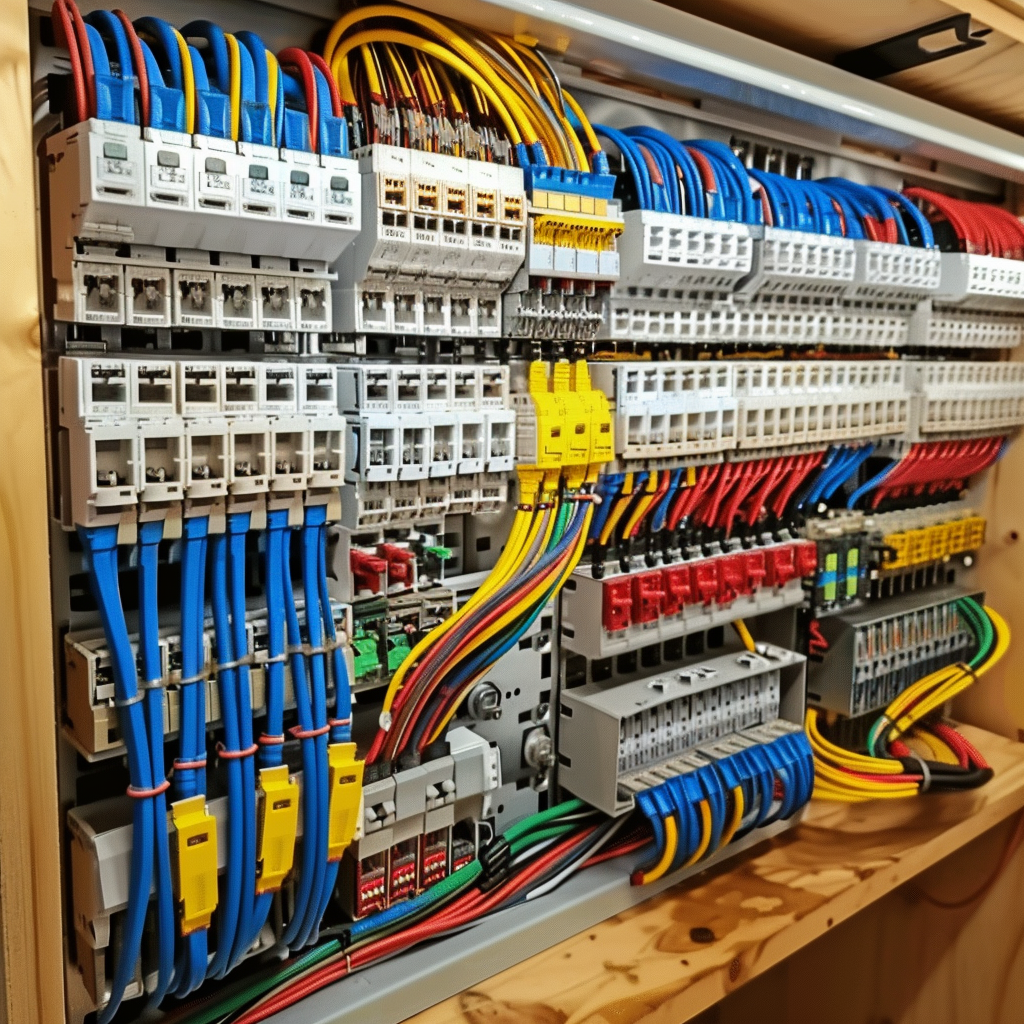Discover the very best in BRE Services for Electrical and Automation
Discover the very best in BRE Services for Electrical and Automation
Blog Article
Demystifying Electric Installment: Comprehending Codes and Rules for a Legal and Safe Configuration
In the world of electrical setup, adherence to codes and guidelines is vital to ensure both validity and safety. The journey to demystifying electric installment goes past mere knowledge with regulations; it requires a profound understanding of exactly how to execute risk-free electric techniques efficiently.
Significance of Electrical Codes
The adherence to electric codes is vital in ensuring the security and integrity of electric installments. Electric codes act as a collection of criteria and guidelines that determine the proper style, installation, and maintenance of electric systems. These codes are established to lessen the danger of electrical dangers, fires, and various other safety issues that may occur from defective electric job.

Furthermore, electric codes are routinely upgraded to integrate new modern technologies, ideal methods, and precaution. Remaining updated with these codes is necessary for specialists in the electrical market to guarantee that their work satisfies the current security standards. Eventually, the value of electrical codes hinges on creating a secure and reliable electric framework that profits both individuals and neighborhoods.
Key Rules for Security
A number of essential laws regulate the safety standards in electric setups. One crucial policy is the National Electric Code (NEC), which supplies standards for secure electrical design, setup, and evaluation to shield people and home from electric risks. The NEC covers aspects such as wiring approaches, grounding, overcurrent security, and devices installation to make certain a risk-free electrical system.
An additional important policy is the Occupational Safety And Security and Health Management (OSHA) standards, which concentrate on the safety of employees associated with electrical installations (BRE Automation Australia). OSHA regulations consist of needs for proper training, safety procedures, and individual protective equipment to stop work environment crashes and injuries
Furthermore, the International Electrotechnical Payment (IEC) criteria intend to integrate electric setup guidelines on an international range. These criteria address problems like electric tools safety and security, electromagnetic compatibility, and energy efficiency to promote uniformity and safety in electric installations worldwide.
Conformity with these vital laws is necessary to make certain the security and validity of electrical installments, shielding both people and residential property from the threats linked with power.
Comprehending National Electric Code
Key guidelines such as the National Electric Code (NEC) provide crucial standards for secure electrical style, setup, and assessment to ensure the security of individuals and building from electrical hazards. The NEC, likewise called NFPA 70, is a comprehensive set of criteria for electric setups that are upgraded every three years. It is developed by the National Fire Security Association (NFPA) and is commonly embraced across the USA.
The NEC covers numerous elements of electrical work, consisting of wiring methods, grounding, overcurrent security, and equipment installment. It aims to guard people and residential or commercial property by attending to prospective risks connected with electrical systems. Conformity with the NEC is generally applied by neighborhood authorities having jurisdiction (AHJs), such as developing code officials and inspectors.
Recognizing the NEC is essential for electrical contractors, developers, and inspectors to ensure that setups meet the needed security demands. By sticking to the NEC guidelines, professionals can aid protect against electric accidents and guarantee the integrity of electrical systems in property, commercial, and industrial settings.

Compliance With Neighborhood Building Ordinance
Recognizing and sticking to local structure codes is essential for guaranteeing the security and compliance of electrical installations within a specific territory. These codes describe specific requirements for electric installments, such as the kind of circuitry to be used, positioning of electrical outlets, grounding approaches, and tons capacities.
When it comes to electrical installments, failure to adhere to regional building ordinance can cause serious repercussions. Non-compliant installments may posture safety threats, increase the risk of electric fires, and result in pricey penalties or lawful issues. In addition, insurance provider might reject to cover problems resulting from installations that do not BRE Electrical fulfill neighborhood building regulations needs. Therefore, it is vital for electricians and specialists to stay notified around and purely comply with the regional building ordinance relevant to their tasks.
Making Certain Safe Electrical Practices
Practicing rigorous adherence to developed security procedures is critical in the field of electric installations to minimize potential threats and ensure the wellness of individuals and properties. Safety in electrical work includes different facets, starting with the correct training of employees involved in installment, upkeep, and repair. It is vital to comply with supplier guidelines diligently when dealing with electric elements and devices. Before starting any kind of job, it is vital to carry out a detailed threat assessment to recognize possible risks and implement safety nets. Using personal safety devices (PPE) such as insulated handwear covers, safety glasses, and non-conductive footwear is non-negotiable to protect versus electrical shocks and arc flashes. Routine equipment assessments, screening, and maintenance schedules are vital to discover and correct faults prior to they escalate right into safety risks. In addition, adherence to correct lockout-tagout procedures during upkeep tasks is vital to prevent accidental energization of circuits. By prioritizing secure practices, electric installments can work effectively while reducing the possibility of crashes or damages.
Conclusion
In conclusion, adherence to electrical codes and laws is critical for guaranteeing the security and legitimacy of electric installations. Comprehending the National Electric Code and conformity with local building regulations are important for a safe arrangement. By adhering to these standards and exercising safe electric methods, individuals can stop prospective dangers and ensure the correct functioning of their electric systems.
Report this page